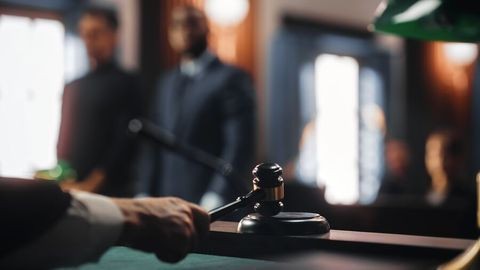March Madness: Government Goes for a Slam Dunk and Misses in CAS Dispute
Client Alert | 2 min read | 03.24.23
In General Atomics Aeronautical Systems, Inc., ASBCA Nos. 61633, 61731 (Feb. 8, 2023), released March 14, 2023, the Armed Services Board of Contract Appeals (ASBCA) considered, but declined to answer, the existential question of whether intracompany lease payments are “costs.” The ASBCA denied the Government’s motion for summary judgment, finding that material facts about the contractor’s intracompany lease payments remained in dispute. Further, the ASBCA held that because the Government failed to respond to the contractor’s affirmative defense that the Government’s claim was barred by the statute of limitations, the Government was not entitled to summary judgment.
The dispute involved a Contracting Officer’s final determination that the contractor failed to comply with Cost Accounting Standards (CAS) 405, 410, and 420. The Government alleged that the contractor improperly excluded from its General and Administrative (G&A) expense base portions of intracompany lease payments that were in excess of the “normal costs of ownership” of the property. The Government argued that the entire amount of the lease payments must be treated as cost input and included in the G&A base, even to the extent they were unallowable under FAR 31.205-36(b)(3), which makes allowable “[c]harges in the nature of rent” for related entities “to the extent that they do not exceed the normal costs of ownership.” The contractor’s noncompliance, so said the Government, diminished the G&A base, resulting in an artificially high G&A rate. The contractor countered that the excess portions of the lease payments were not “costs” and were therefore properly excluded from the G&A base. The contractor supported its position with declarations stating that because the contractor’s parent company also controlled the landlords, the contractor’s right to occupy the rental properties was not, in fact, contingent on payment of the portions of the leases exceeding the normal cost of ownership.
Although the CAS do not define “cost,” the Board looked to how courts have defined the term, which include the “outlay incurred in the operation of a business enterprise,” “an economic sacrifice,” a “price paid,” or something “surrendered” in order to obtain something else. Based on the contractor’s declarations, the ASBCA held that a triable question of fact existed as to whether “the excess amounts [the contractor] paid above the cost of ownership were a price or economic sacrifice necessary to acquire and retain the leaseholds.”
Like the ASBCA’s decision in Cellular Materials International, Inc., which analyzed when a cost is “incurred,” the instant decision underscores the fact-intensive inquiry that may be necessary to determine whether certain types of payments are, in fact, “costs” for purposes of government contract cost accounting.
Contacts
Insights
Client Alert | 6 min read | 11.26.25
From ‘Second’ to ‘First:’ Federal Circuit Tackles Obvious Claim Errors
Patent claims must be clear and definite, as they set the boundaries of the patentee’s rights. Occasionally, however, claim language contains errors, such as typographical mistakes or incorrect numbering. Courts possess very limited authority to correct such errors. The United States Court of Appeals for the Federal Circuit has emphasized that judicial correction is appropriate only in rare circumstances, where (1) the error is evident from the face of the patent, and (2) the proposed correction is the sole reasonable interpretation in view of the claim language, specification, and prosecution history. See Group One, Ltd. v. Hallmark Cards, Inc., 407 F.3d 1297, 1303 (Fed. Cir. 2005) and Novo Indus., L.P. v. Micro Molds Corp., 350 F.3d 1348, 1357 (Fed. Cir. 2003).
Client Alert | 5 min read | 11.26.25
Client Alert | 6 min read | 11.25.25
Brussels Court Clarifies the EU’s SPC Manufacturing Waiver Regulation Rules
Client Alert | 3 min read | 11.24.25







